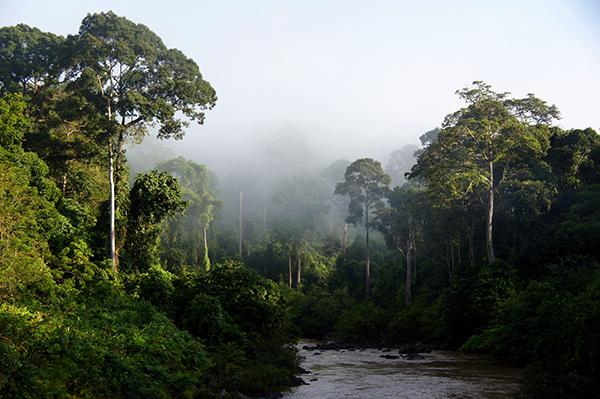
Credit: Jedediah Brodie
MISSOULA – An international team of researchers, including two from the University of Montana, are working to help identify priority forest areas for protection on Borneo.
The government of the state of Sabah in Malaysian Borneo has set an ambitious target of securing 30% of Sabah’s land area under protection by 2025. The study identified important forest areas across the state that are critical for protection. These areas are rich in threatened rainforest animals and plants. The forests also store large amounts of carbon, helping to slow global warming.
In total, the priority forests identified are about the size of Glacier National Park, almost twice the size of the Yorkshire Dales National Park in the United Kingdom.
Lead author, Dr. Sara Williams from UM said, “What makes our study different is that the research is being used to inform conservation planning decisions about to be taken by government agencies.
“The priority forest areas account for 5% of the land area of the state of Sabah. The approach that we came up with, selecting areas for protection strategically rather than randomly, protects around 12% of most of the statewide conservation features that we were interested in, which includes species ranges, forest carbon and landscape connectivity.”
Creating land corridors that link protected areas together will mean animals can move from the large parks across the Indonesian border into the flagship conservation areas in the center of Sabah.
“Allowing species to move from the hottest lowland areas to the cooler mountains will be especially important for conserving rainforest species in the long term, as they will need to keep up with a warming climate,” said Dr. Sarah Scriven from the University of York.
UM’s Dr. Jedediah Brodie said, “Protected areas are generally situated based on scenic beauty or political expediency. But putting new protected areas in the best places for biodiversity, as we’ve done here, more than doubles their conservation benefits.”
###
The paper, “Incorporating connectivity into conservation planning for optimal representation of multiple species and ecosystem services,” is in press at the journal Conservation Biology.
For more information, email Brodie [email protected].
Other partners in the study are:
- Eyen Khoo, Alexander Hastie, John Sugau, Dr Reuben Nilus and Dr Joan Pereira (Forest Research Centre, Sabah Forestry Department)
Frederick Kugan (Sabah Forestry Department)
Dr. Agnes Agama and Dr Glen Reynolds (South East Asia Rainforest Research Partnership)
Professor Gregory Asner and Dr Luke Evans (Arizona State University)
Professor David Burslem (University of Aberdeen)
Dr. Jenny Hodgson and Dr Lydia Cole (University of Liverpool)
Dr. Colin Maycock, Sandy Tsen, Leung Lee and Suzika Juiling (Universiti Malaysia Sabah)
Professor Jane Hill (University of York)
Media Contact
Jedediah Brodie, UM Craighead Endowed Chair of Conservation
[email protected]
406-880-3854
Original Source
http://news.




